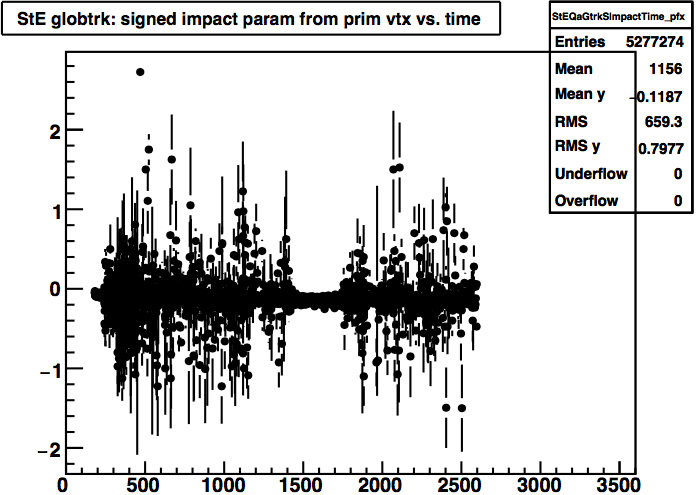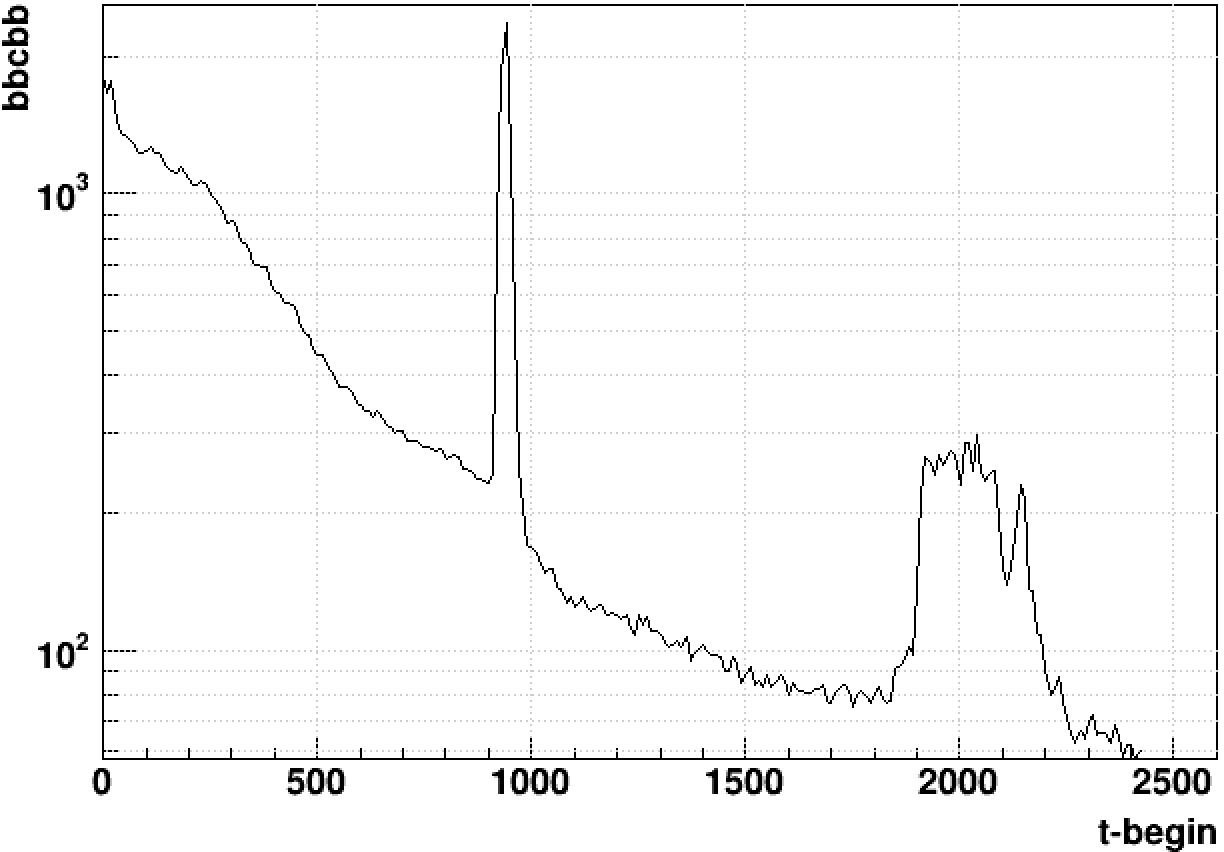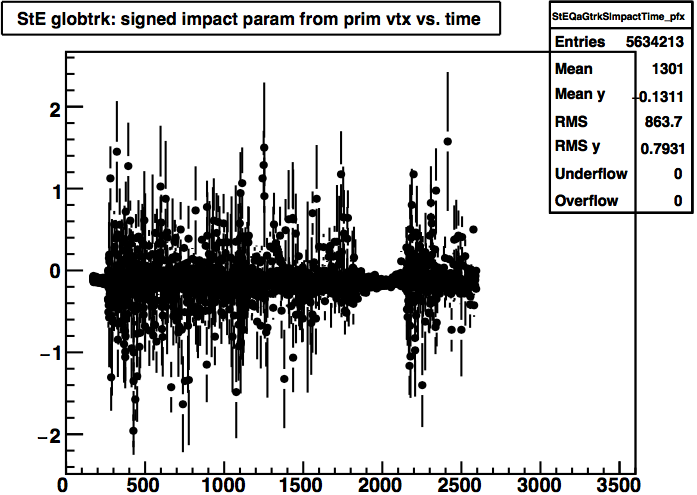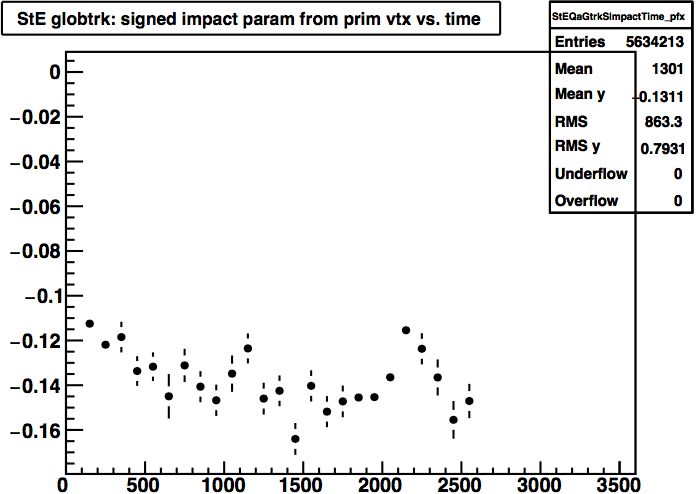- genevb's home page
- Posts
- 2025
- 2024
- 2023
- 2022
- September (1)
- 2021
- 2020
- 2019
- 2018
- 2017
- December (1)
- October (3)
- September (1)
- August (1)
- July (2)
- June (2)
- April (2)
- March (2)
- February (1)
- 2016
- November (2)
- September (1)
- August (2)
- July (1)
- June (2)
- May (2)
- April (1)
- March (5)
- February (2)
- January (1)
- 2015
- December (1)
- October (1)
- September (2)
- June (1)
- May (2)
- April (2)
- March (3)
- February (1)
- January (3)
- 2014
- 2013
- 2012
- 2011
- January (3)
- 2010
- February (4)
- 2009
- 2008
- 2005
- October (1)
- My blog
- Post new blog entry
- All blogs
Run 20 two beta squeezes impact on TPC
I took a look at two typical AuAu9.2 runs from this week during which the collider controllers perform two beta squeezes to see if the sDCA shows any effects.
From the RICH scalers, the BBC blue beam background rate ("bbcbb") seems the most sensitive. Here is that rate versus time, in seconds, from the start of the run for run 21071009:

Now, here is a profile of signed DCAs for the TPC, binned in time by 0.2, 20.0, and 100.0 seconds, allowing for a trade-off between statistics used in each data point that allow us to see smaller amplitude features vs. time granularity to allow us to see smaller duration features. Importantly, I have accumulated data from FastOffline, which produced the first 3000 events from 26 randomly selected files of this run, which results in portions of the run for which more statistics are available and portions with fewer statistics, which is evident in the errors bars shown in this profile histogram. Also important to note is that it appears that these plots are offset by 176 seconds, due to subtracting the time of the first event in the run (above) and the time of the run start (below), as the shift crew starts a run with 0 events to prepare it for rapid starting of data acquisition after injection completes (at which time an indefinite number of events are requested).



The result is that we see a clear overall downward trend in time, but no really distinctive shorter-time features at the millimeter scale that would concern us for calibrating the TPC.
The negative values for this sDCA quantity reflect the same issue we saw when calibrating SpaceCharge & GridLeak for Run 19 (see here): there is a negative offset at low luminosity. Given that Irakli has seen a need to recalibrate alignment for Runs 19 & 20, and that such a new alignment calibration has not been used for these plots, that may yet explain this negative offset.
The downward trend of the sDCA over time is compatible with the existence of real SpaceCharge distortions in the data. In RFF data, SpaceCharge creates a positive sDCA, and that positiveness would decay with collision rate. So if an offset of, for example, +0.15 cm was applied to compensate for alignment as noted in the previous paragraph, this would look like a sDCA that slowly falls toward 0 as the collision rate drops. We can see that the SpaceCharge introduces a distortion on the order of ~0.1 cm at the beginning of the fill, and we will likely try to correct for this with a calibration later.
Here are the same 4 plots for run 21070001 a day earlier (offset for sDCA plots should be +165 seconds). Here perhaps we really are seeing some small effects due to the second beta squeeze at the level of ~+0.03 cm. If there is some impact from the first beta squeeze, it isn't obvious. The "blip" in the RICH scalers for the first squeeze has a FWHM of ~20 seconds centered around 940 seconds, so perhaps it is the single high point right around 1100 seconds in the 20-second-bins sDCA plot (middle). But I don't have sufficient statistics in each bin with the 0.2-second-bins sDCA plot (left) to discern it. I actually hope there is some effect there as we will otherwise have a difficult time getting the correction right given that the RICH scalers do show impacts and would almost certainly be used one way or another for the SpaceCharge distortion corrections.
Again, all of this is already at the sub-millimeter scale, so unlikely to be a critical issue for physics from this data if we don't nail down these corrections perfectly.




-Gene
- genevb's blog
- Login or register to post comments
